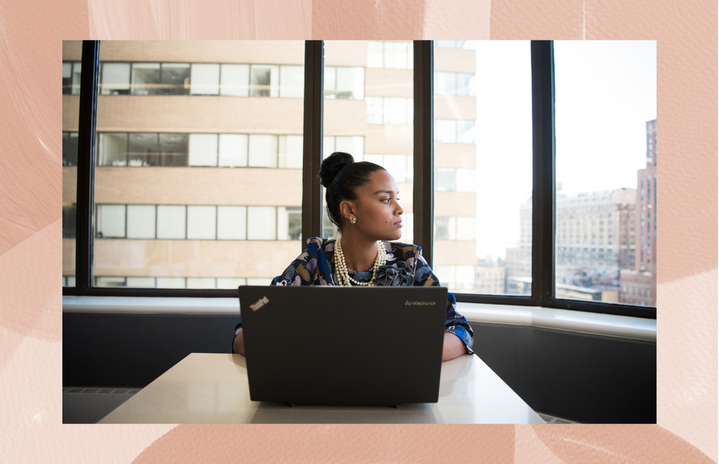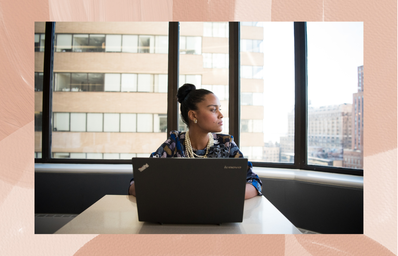A LinkedIn image is typically nothing more than a headshot: A minimal view of the top of your shirt, perhaps, but rarely a glimpse below the shoulders. This hasn’t stopped men from reaching out to me or my friends that focus on our looks, bodies, and style, rather than our expertise. Unfortunately, sexual harassment in the workplace is somewhat of an epidemic, and that harassment has started to trickle into the pre-workplace environment.
A nonprofit organization called Stop Street Harassment reported in a 2019 study of 1,182 women and 1,037 men that 81% of women experienced sexual harassment or assault in their lives versus 43% of men, with over one third of those women having it occur in their workplace – the second most common location. One in seven of those women have since quit their jobs as a result of the harassment they’ve faced. And now women are being driven off of LinkedIn, too, thanks to unsolicited, uncomfortable, downright inappropriate messages.
Some DMs are as close to innocuous as unsolicited flirting can get, such as: “Hi pretty, how are you doing today?” Others involve full-blown pornagraphic images. According to a 2018 YouGov report based on a survey of 2,121 women and 1,738 men, 41% of millennial women have received unsolicited “d*ck pics.” They come via airdrop, they come via dating app, they come via social media, and now they come through in my job search, too – as does explicit commentary. Many applications have implemented filters to blur out inappropriate imagery, troll through text to flag inappropriate messages, or allow you to control what you see through the use of a separate requests folder. But LinkedIn has always had an unspoken, widely understood rule about professionalism, making these unwelcome advances in particular feel less like online flirting and more like workplace harassment.
If a simple headshot isn’t safe, what is?
Katie, 23 and a recent college graduate, has had her own experience with creepy LinkedIn messages. She recalls an exchange that started as a job offer from an alumni of her college, so she responded with her interest. “Throughout the conversation, it became more clear he was looking for some kind of sexual rendezvous,” Katie tells Her Campus. “It was getting more and more disgusting with each message.”
The harasser complimented Katie’s LinkedIn profile photo, focusing on her blonde hair and glasses, and later sent her a photo of a porn star with similar features — performing oral sex.
Katie blocked his profile and warned her friends to steer clear of any messages from the same man – he wasn’t offering a job to college students, but rather, fantasizing about one they could offer to him. “It was scarring for me to realize that even my professional LinkedIn profile is something that men will be sexually attracted to,” Katie says. If a simple headshot isn’t safe, what is?
Katie blocked the man and alerted LinkedIn to the situation, but didn’t call out the specific user. She did locate and contact the man’s employer, but never heard back from them about his behavior. As far as she knows, he was never penalized for his actions, despite outing himself as wildly unprofessional through his messages – as so many others do.
I’m no stranger to LinkedIn harassment myself. It was my freshman year of college that some of my friends and I began receiving uncomfortable messages from the same man on LinkedIn. The most shocking part? The man who messaged us all was a high school principal, and openly displayed that title on his LinkedIn profile.
Stephanie, 17 at the time, and 19 now, was targeted by the same man. She recalls him asking her if she planned on modeling or “anything like that.” She couldn’t believe this man was employed in a leadership position over minors when he clearly had inappropriate thoughts about them. “Knowing that he’s in a position of power over students who aren’t much (if at all) younger than me makes me wonder if he’s ever abused that power, or made anyone else uncomfortable outside of the separation of a computer screen,” Stephanie tells Her Campus.
LinkedIn is a necessary tool for finding a job after graduation in the digital age. Why should women be held back because of a man’s inability to keep his thoughts to himself? Why should a woman be made to feel uneasy about checking our messages on a platform designed for career development and growth? What is it about a headshot or a woman’s resume that leads a man to send her a sexually suggestive message for his own personal pleasure? Is there really no better place to try to hook up than a job recruitment platform, or do they just not care about the way they present themselves, even on a career-oriented website?
LinkedIn claims to not tolerate any form of harassment on their site, stating, “We have clear policies and practices and also always listen to our members to increase our understanding of the experiences that could erode a member’s sense of safety on the platform,” but the flagging system they have in place for inappropriate content didn’t stop any of the messages my friends or I received. It’s been two years since the CEO confirmed they were prioritizing handling harassment, but their biggest strategy to date is for users to make sure to report harassment as it happens. So, while it’s tempting to block the harasser and go about your day if it happens to you, reporting the incident to LinkedIn can help ensure the problem is being addressed, leaving fewer people to fall victim to the audacity of a man on the internet who believes detailing his fantasies about your body is the response you were looking for in sharing your Dean’s List recognition.
But if that’s one bored man’s – who’s still living in his parents’ basement – way of congratulating you (or if it happens to be a woman’s), use it as an opportunity to stop them in their tracks. Perhaps it’s the fact that men cannot see as many hues of colors as women that have led to some of them mistaking the blue and white LinkedIn icon for the fiery pink and red logo of Tinder, or maybe they’ve misunderstood the type of “job” one is supposed to be searching for on the networking platform. Either way, when it comes to defining sexual harassment the impact far outweighs intent, and I, for one, have had enough. I’m begging you: Leave LinkedIn to professional conversations only.
Interviews have been edited for clarity and length.
Studies Referenced:
Kearl, H., Johns, N. E., & Raj, A. (2019). Measuring #metoo: A national study on sexual harassment and assault.
YouGov, (2017). Four in ten female millennials have been sent an unsolicited penis photo.


